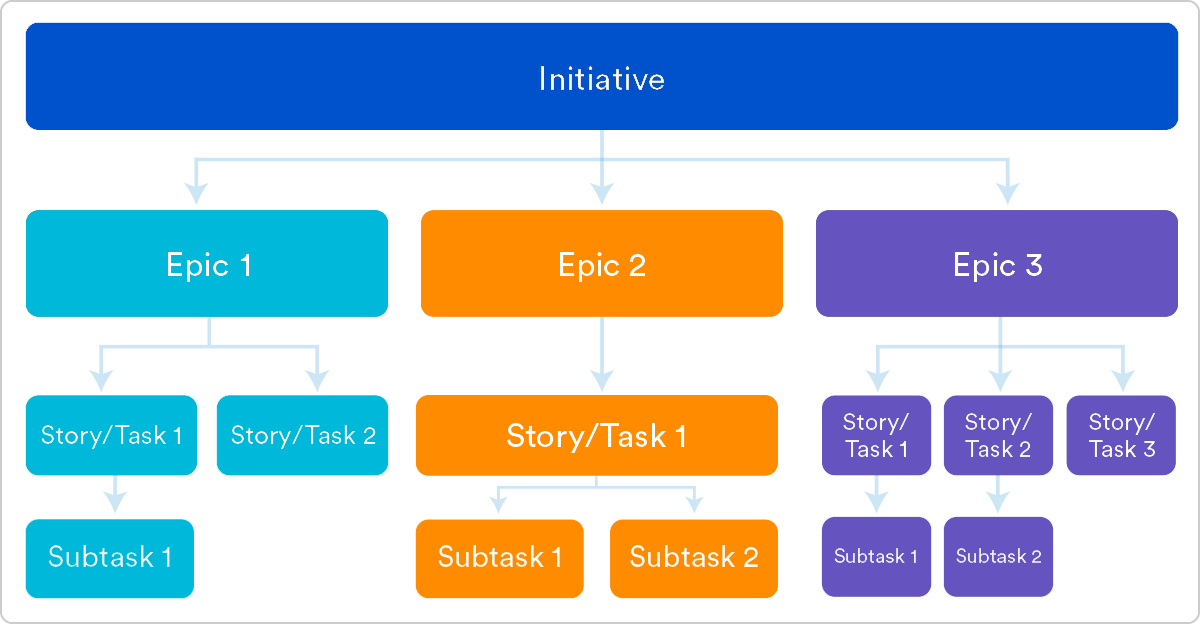Accurately estimating development time and cost is a common pain point for product teams. While the idea of breaking up a project into small parts and estimating each part sounds straightforward, changing priorities, inaccurate estimates and other challenges make the process more of an art than a science for many product teams.
Let’s take a look at how to think of estimates and a five-step process that you can use to estimate the time and cost of a project.
Estimating development time and cost is a common pain point for product teams—here’s how you can improve the accuracy of your estimates. Share on XHow to Think of Estimates
Story points are the de facto standard for estimating the time and cost of a project. After breaking down a project into small enough pieces, product teams estimate the difficulty of each piece using arbitrary points. These points are correlated with units of time to estimate the time and cost to complete a project (or at least the current sprint).
Of course, story points are the only way to estimate the time and cost of a software project. Many businesses specify priorities rather than deadlines while still striking the right balance between velocity and quality. By removing the time pressure, these organizations seek to achieve sustainable and high-quality progress towards a goal.
The optimal decision depends on your organization’s requirements and goals. If you have a strict delivery deadline and a hard budget, story points can be a valuable exercise in ensuring that you have the most up-to-date estimates at all times. If you have more flexibility, less strict approaches can help reduce tension and potentially improve quality.
Step #1: Start with the Right Scope
Software is designed to solve a problem. While the problem may be simple at the onset, every product manager knows that the scope tends to expand over time. A constantly expanding scope—colloquially known as scope creep—makes it impossible to estimate the time and cost of a software project because of the moving goal posts.
The best way to limit scope is to ask yourself: What is the smallest thing that you can ship to reasonably meet your goal?
Rather than trying to tackle everything at once, a tight scope ensures that you can meet goals on-time and on-budget and then iterate over time. The software scope should be sufficient enough for users to solve a specific problem but may not contain all of the bells and whistles that you want to include when the project is fully mature.
Step #2: Break Down the Project
The most common way to break down a software project is by writing user stories. Each story describes how a software feature works (and provides value) from the perspective of a user. Unlike software requirements, user stories use non-technical language to help ensure that the team knows why they are building a feature and what value it provides.
For example, a user story for a sharing feature might read: “As an active user, I want to invite my friends, so we can enjoy the service together.”

Example of Breaking Down a Project – Source: Atlassian
User stories are typically organized into a Trello board, Jira or similar Agile tool and separated into different epics—or larger groups of related user stories. These epics are then grouped into initiatives that represent a larger goal. These breakdowns ensure that everyone is working toward a common goal and understands the bigger picture.
Step #3: Estimate the User Stories
User stories are typically estimated using story points, which express the overall effort required to implement the story. Since the level of effort differs between individuals, the velocity of the team (e.g., the number of points completed per unit of time) will vary. The idea is that it becomes harder to play politics using velocity as a tool.
A process known as planning poker can help the team arrive at a consensus with regards to an appropriate number of story points for a given user story. Each developer estimates the number of story points and the team agrees on the right amount. If a story becomes too hard to estimate, it’s a sign that it should be broken down into smaller components.
If you or your team is still struggling to figure out what the right user stories should be, job stories might be a worthy alternative. Take a look at our guide on user stories vs job stories for more details.
Step #4: Assess the Development Velocity
Organizations often track how many story points are completed during each development cycle. While the number of story points completed per cycle may vary, you can average these numbers over time to determine the development velocity. New teams typically see velocity increase over time while existing teams can ensure they’re staying on track.
A decrease in velocity could be a sign that some part of the development process is experiencing problems and a team meeting may be necessary. When velocity is erratic over time, it could be a sign that estimation processes need to be revised to ensure that they are more streamlined and accurate.
Step #5: Estimate the Time and Cost
The combination of story points and velocity can provide rough estimates of a project’s timeline and cost. For example, a team that completes 50 story points per week on a consistent basis could complete a 500 point project in 10 weeks. You can multiple that timeline by the cost of development hours to arrive at an estimated project cost.
Of course, most projects involve some amount of scope creeps over time. There may be things that you didn’t think of at the onset of the project or requests from beta users that are integral to the success of the project. As a result, it usually makes sense to apply a buffer to these initial estimates to account for these unforeseen costs.
The Bottom Line
Accurately estimating development time and the cost is a common pain point for product teams. While not every organization needs a complex process in place, user stories, story points and Agile metrics can go a long way in helping improve the accuracy of estimations.
If you need help planning out your project, Sharkbyte’s Custom Roadmap Development can help you outline a project’s objectives and tasks to keep stakeholders on track.



